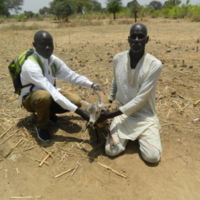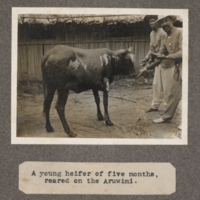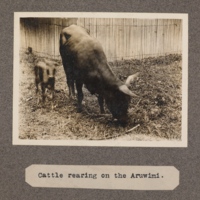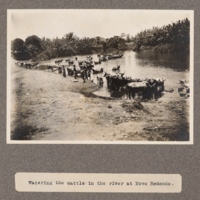
Chepkorir
There are an estimated 328,000 people living in conditions of slavery in Kenya (GSI 2018). While Kenya has committed to eliminate child, early and forced marriage by 2030 in line with target 5.3 of the UN Sustainable Development Goals, 23% of Kenyan girls are still married before their 18th birthday. According to UNICEF, Kenya has the 20th highest absolute number of child brides in the world. Forced child marriage is driven by gender inequality with the belief that girls are inferior to boys. It is exacerbated by poverty, natural disasters and cultural traditions such as female genital mutilation and Samburu whereby a close family relative will approach a girl’s parents with red Samburu beads and place the necklace around the girl’s neck as a form of engagement. Chepkorir was forced to work tending her father’s cattle from a young age, preventing her from receiving any education. When she was 10 years old, Chepkorir’s father arranged her marriage to a 76 year old man. She ran away and found refuge in a church who put her in contact with HAART Kenya. At HAART’s shelter, Chepkorir was able to get an education and secure employment. The COVID-19 outbreak has however led to the postponement of her employment.

Kolong Guot Mayuol
There are an estimated 465,000 people living in modern slavery in Sudan (GSI 2018). Between 1983 and 2005, the central government of Sudan enslaved tens of thousands of black South Sudanese Christian and traditionalist people. It was part of a genocidal war against South Sudan, with a simple aim: to force South Sudan to become Arab and Muslim. Kolong Guot Mayuol was abducted in 1992, taken to northern Sudan and forced to work in a cattle camp.

Dut Yai Yai
Dut Yai Yai was ‘redeemed’ (bought out of slavery) by Christian Solidarity International (CSI), a Zurich-based international human rights organization, in January 2007. He told his story to CSI staff in Aweil State, Southern Sudan. Along with the three main types of modern slavery (chattel slavery, debt bondage, and contract slavery), war slavery is another form of contemporary bondage. Thousands of women and children were taken into slavery during the decades of Sudan’s civil war, mainly from Northern Bahr El Ghazal and the Nuba Mountains. Slave-taking was revived in 1985 by the National Islamic government of Sudan primarily as a weapon against counterinsurgents in the South, and secondarily a way to reimburse its surrogate soldiers for neutralizing this threat. In 1989 the government created the Popular Defense Forces (PDF), militia trained to raid villages and take people as slaves. PDF recruits were allowed to keep whoever they captured, along with booty of grain and cattle. One study documents 12,000 abductions by name, while NGOs offer estimates ranging from 15,000 to 200,000. The slaves were often moved to large towns in the north on week-long journeys during which the women were repeatedly raped, and then sold to new masters who used them without pay for farming and sexual services. The peace process brought these PDF abductions to an end, but inter-tribal abductions continue in Southern Sudan. In addition, Sudanese children are used by rebel groups in the ongoing conflict in Darfur; Sudanese boys from the country’s eastern Rashaida tribe continue to be trafficked to the Middle East for use as camel jockeys; the rebel organization “Lord’s Resistance Army” has forcibly conscripted children in Southern Sudan for use as combatants in its war against Uganda; and the institution of chattel slavery continues in southern Darfur and southern Kordofan.

A young heifer of five months, reared on the Aruwimi

Cattle rearing on the Aruwimi
